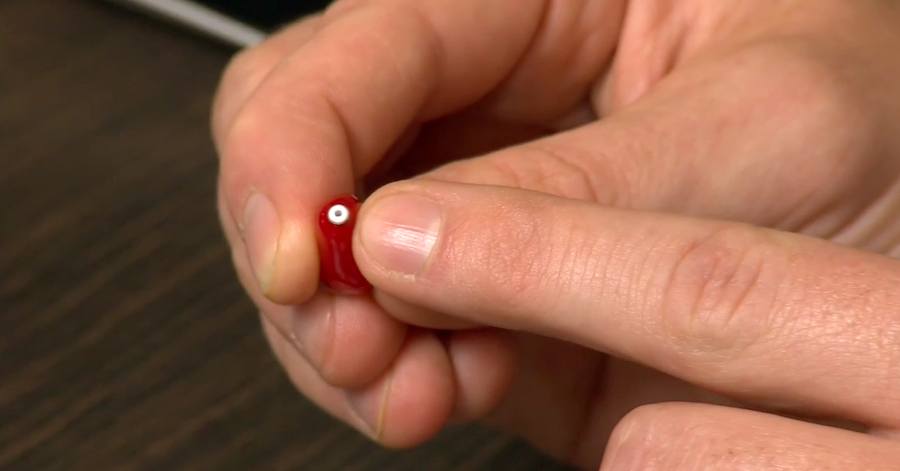Understanding how to change wax guards on hearing aids is a critical aspect of caring for your device. Although often talked about, most people are surprised to learn that ear wax is actually designed to:
- Protect the skin in the ear canal
- Assist in lubricating and cleaning the ear
- Act as a deterrent for bacteria and dirt
Even so, too much of anything can quickly turn into a bad thing. Continue reading for a few simple tips for how to change wax guards on hearing aids.
What Are Wax Guards or Wax Filters and Why Are They Important?
Wax guards are tiny plastic yokes designed to protect the speaker or receiver of your hearing aid from wax. Some of the more advanced wax guards are also effective at protecting your speaker from moisture as well.
Wax guards are important because receivers do not like moisture or wax. If either gets into the receiver of the hearing aid, it can lead to problems. As a matter of fact, excessive ear wax is one of the leading causes of hearing aid repair along with battery malfunction and moisture damage. When this happens, sounds may be nonexistent, weak, or distorted.
How Will You Know When Wax Guards Need to be Changed?
During your regular care and cleaning routine, always pay special attention to the speaker end of the hearing aid. Carefully check your wax guard to see if it has a significant amount of wax in it. The majority of wax filters or wax guards have a series of holes located in the cup, which is visible to the eye.
If you’re unable to see the holes at all or if they are blocked, it’s time to change your wax guards. Most importantly, you shouldn’t wait until the sound weakens or goes dead. In many instances, this may not happen until the wax has completely invaded the speaker.
How Often Should I Change My Wax Guard?
Unfortunately, there is no hard and fast rule for how often you should change your wax guard. While some may change theirs every month, others may get multiple months out of them. It actually depends on the amount of earwax in your canal, which can vary from person to person.
How to Change Wax Guards on Hearing Aids?
Today, there are a growing number of hearing aid styles. Even so, most of these devices are similar in nature. However, you should always utilize the same type of wax filter the manufacturer originally supplied. If you are in doubt, simply contact an expert at North Shore Hearing P.C. for assistance locating the right wax guard and to learn how to change wax guards on hearing aids.
Custom Hearing Aid General Instructions
Use the following simple steps to learn how to change wax guards on your custom hearing aids.
- Remove your new wax guards out of the packaging
- Then, remove the tool from the shell. The tool should have two pins: one with the new wax filter and one empty for removal.
- Insert the empty pin into the old wax filter located in the speaker and pull it out.
- With the other pin, insert the new wax filter. Remove the tool by rolling it off and throw it away.
For more information watch how to change wax guards for Oticon No Wax filters.
How to Change Wax Guards on Receiver In the Ear (RITE) Hearing Aids
If you have a RITE hearing aid, it becomes even more important for you to change your wax guard. These hearing aids are much more sensitive to wax than custom hearing aids. Additionally, RITE hearing aids are more likely to fail if you do not properly care for them.
Changing the wax filters or wax guards on a RITE device is similar to changing the guard on a custom device. Use the following steps to learn how to change wax guards on RITE hearing aids:
- Most wax filters will come on a circular holder. Remove the tool from the shell. It should have two pins: one with the new wax filter and an empty one for removal.
- Insert the empty pin into the old wax guard. After you feel it click, simply pull it straight out.
- With the other pin, insert the new wax filter.
- Remove the tool by rolling it off. After you’re done, throw it away.
For more information watch the Oticon video on how to change wax guards on RITE hearing aids.
Contact North Shore Hearing P.C.
Although often overlooked, your hearing aid wax guards are designed to prevent wax from getting into the hearing aid. Failure to learn how to change your wax guard could lead to expensive repairs or outright hearing aid replacement. In either case, the experts at North Shore Hearing P.C. can help! We bring decades of solutions-based experienced helping customers find and maintain their hearing aids.
Contact North Shore Hearing P.C today to learn more about wax protection systems and tools we offer.

